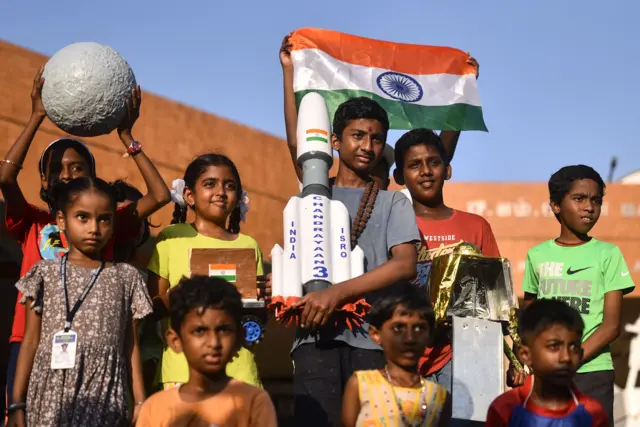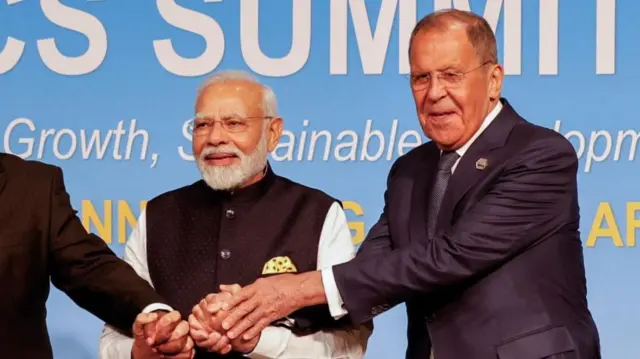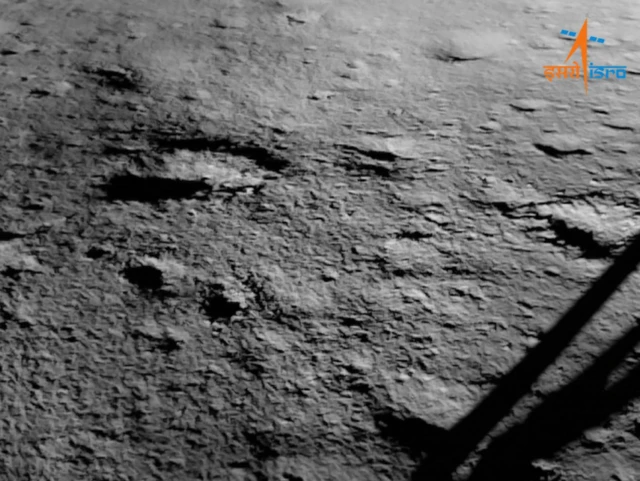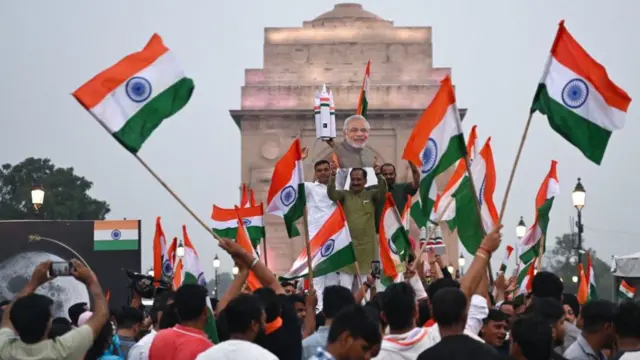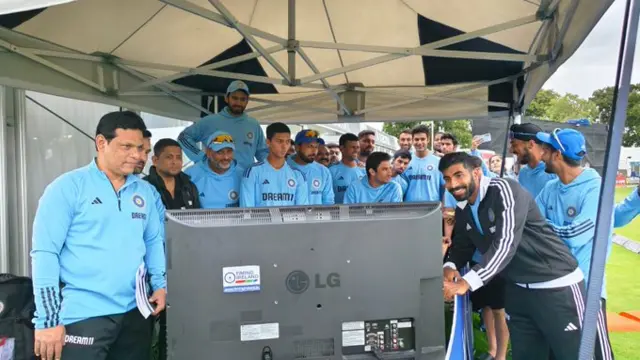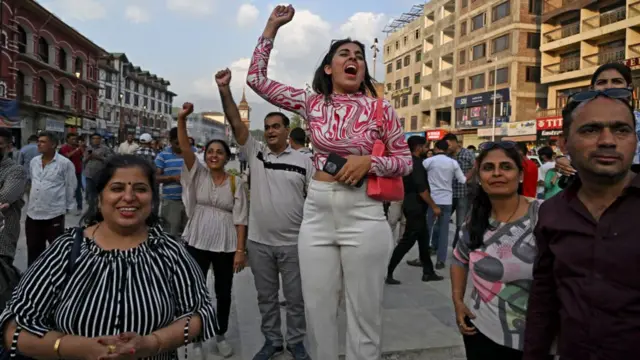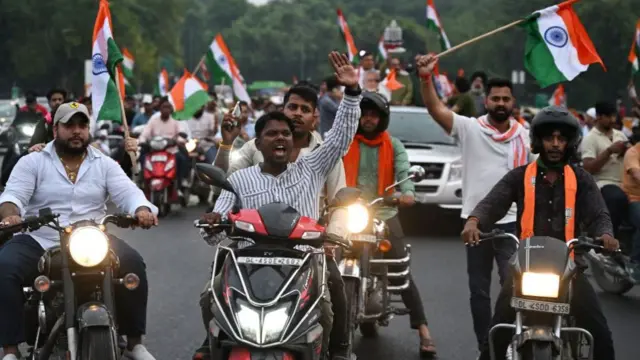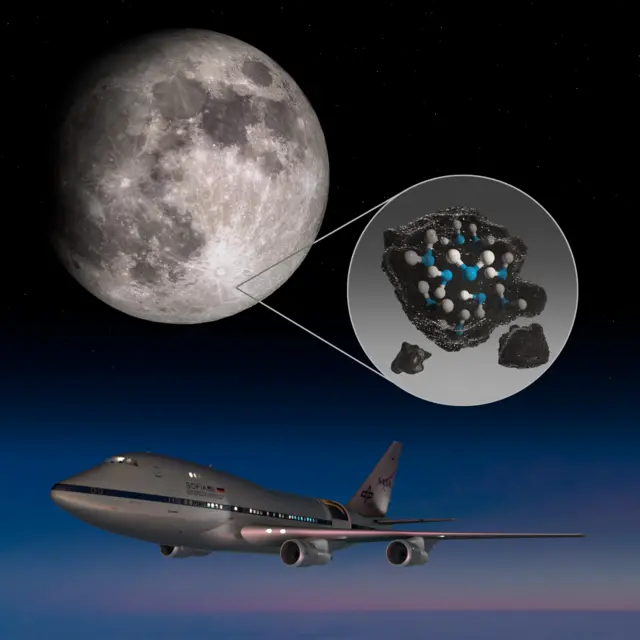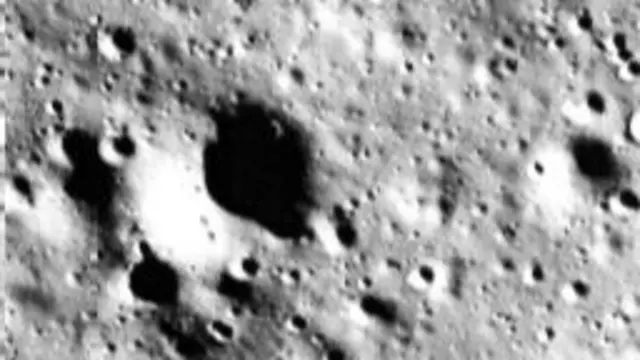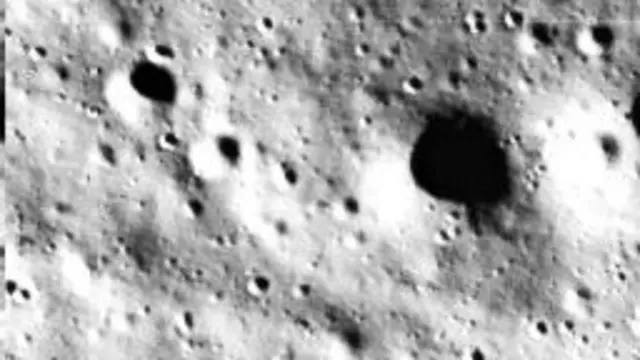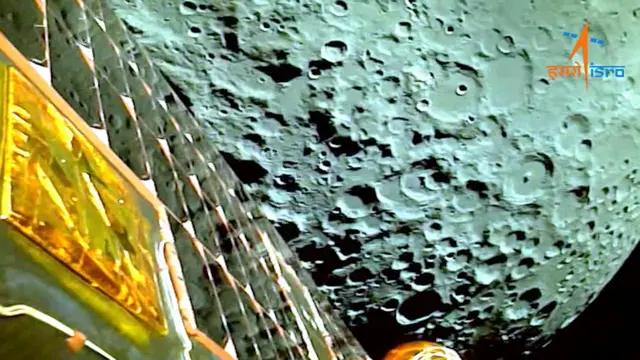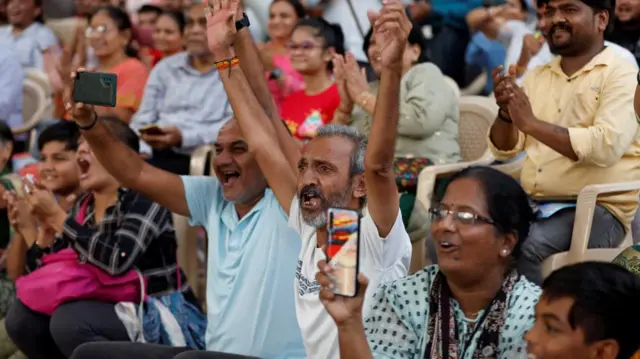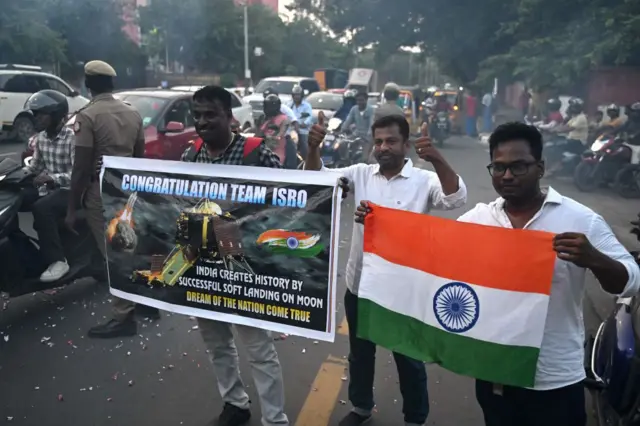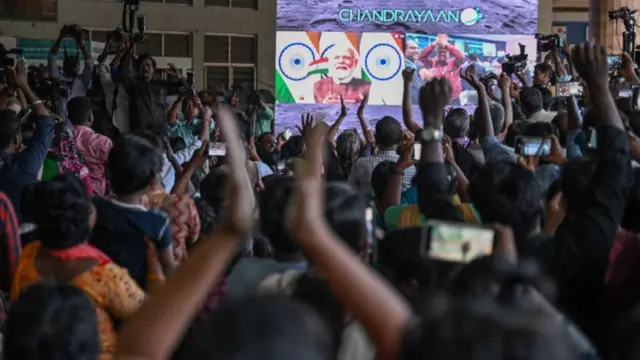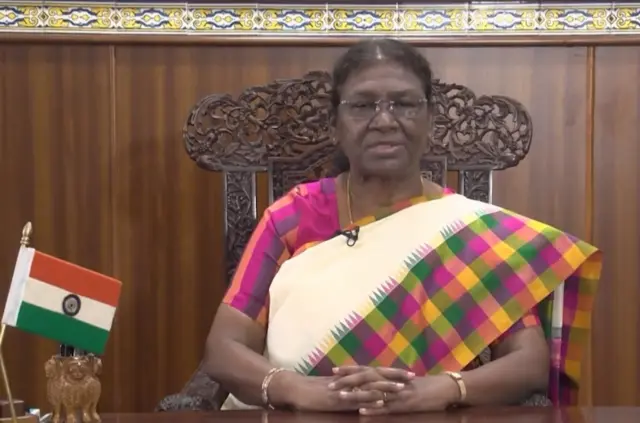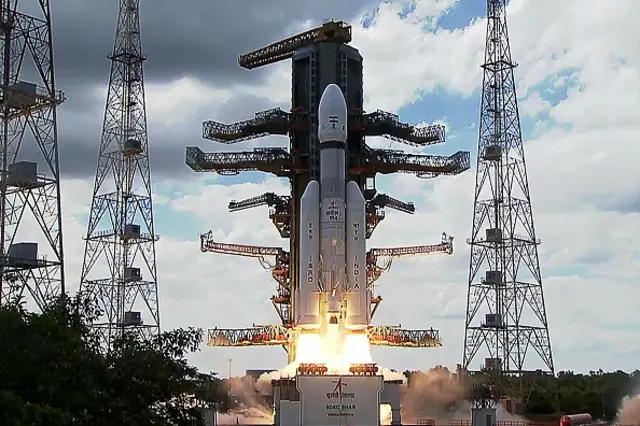Thanks for joining uspublished at 18:09 BST 23 August 2023
We're ending our live coverage now, but thanks for joining us as we've reported the tense descent and moments of jubilation as the Chandrayaan-3 achieved its goal of a soft landing near the Moon's south pole.
Want to read more?
Take a look at what happened today: India makes historic landing near Moon's south pole
Find out why it's such a big deal: The race to unravel the mysteries of Moon's south pole
Or relive the moment the lander touched down and watch our correspondent's live reaction to it.
This page was brought to you by teams in Delhi and London, including Sharanya Harishikesh, Vikas Pandey, Nikita Mandhani, Meryl Sebastian, Zoya Mateen, Ali Abbas Ahmadi, Jacqueline Howard, Gabriela Pomeroy, Jack Burgess and Joel Guinto. It was edited by Geeta Pandey, Dulcie Lee, Nathan Williams and Heather Sharp.
